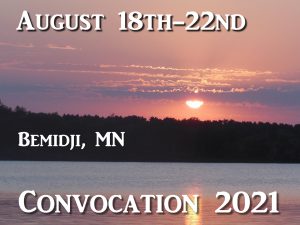Observe how the later prophets build on the former, expanding on many of the same themes. One of those themes is ‘Zion’s travail,’ as the last day’s transition into the golden age of permanent peace in the land, as the end of the covenant (“shall lie down in safety, none making them afraid again forever”). The eschatology of the covenant demands a crisis transition that is always set in the context of a final tribulation climaxing in the that great and terrible day of the Lord (OT), the great day of God Almighty (NT).
Moses’ prophetic despair of Israel’s ability to keep the Land based on covenant compliance (“The Lord has not given you an heart to perceive … unto this day”) looks ahead to a final crisis of great affliction that ends with the eschatological new heart and the universal and final re-gathering to the Land (compare Deut 4:30; 30:4-6; Eze 39:28-29). This becomes the paradigm of a time of national travail that we see in such prophets as Isaiah (Isa 13:6-10; 21:3; 26:16-17; 66:8), Micah (Mic 5:3), Hosea (Hos 5:15;6:1-2), Jeremiah (Jer 30:6-7), to mention only a few where the express language is used.
Note how Jeremiah uses Isaiah’s language in Isa 13:7-8 almost verbatim. Only he, in keeping with Moses, applies it not only to a cosmic upheaval, but more specifically to God’s covenant controversy with Jacob (Mic 6:2). We know, however, that God’s controversy is not only with His people, but no less with the nations. Both are contending in one way or another against the covenant. Israel, by seeking to stand in any other righteousness than that found only in Messiah (Ro 9:32); the nations, by their presumptuous assault on the covenant land and people (Joel 3:2; Dan 11:28, 30, 30; Zech 12:2-3 etc.), thus, the ‘controversy of Zion’. We may be sure that the question of the Land, particularly Jerusalem, will be the one stumbling stone calculated to kill all the birds, as it tests Israel in one way, the nations in another, and the church in still another.
I read Jeremiah’s experience in Jer 30 as one of personal shock and confounding astonishment. Precisely where he, along with the returning exiles, would have expected the final peace of the return prophecies of the earlier prophets, he sees instead the anomaly of Jacob in the throes of a final travail that ends in millennial peace in the Land under Messiah. Yes, it fulfills some intimations in some of the earlier prophecies, but it is no less a paradox of astonishing proportion.
Later, Daniel will adopt Jeremiah’s language of Jacob’s trouble by applying the same precise language to the last great and unequaled trouble that ends in nothing short of Israel’s deliverance and the resurrection of the righteous (compare Joel 2:2; Jer 30:7 with Dan 12:1-2, 13; Mt 24:21, 29). If similarity of language and sameness of described events is permitted to mean anything, then manifestly, Daniel sees Jacob’s trouble as the last half of the last week of years bringing in the final redemption. Jesus will appropriate this same language of a final and unequaled tribulation that begins with Daniel’s abomination and ends in His return (Mt 24:15-16, 21, 29).
The Lord’s use of Joel’s and Isaiah’s language for the day of the Lord leaves no question that His return follows the stellar darkness that follows “immediately AFTER the tribulation of those days” (Mt 24:29; Acts 2:20). Uniformly, in all such passages, the surviving remnant is saved only after a final travail that ends in the national repentance / birth that accompanies the day of the Lord (Isa 59:19-21; 66:8; Zech 12:10; Acts 3:21; Ro 11:26; Rev 1:7). It is the time of the great, “blessed is He who comes” (Mt 23:39). It is the day of Israel’s penitent acknowledgement of their estranged brother Joseph / Messiah. Rev 12 will take up this theme by associating Mary’s travail with Israel’s travail of the last 3 1/2 years (Satan’s ‘short time’; Rev 12:12). The thing to be noted is that before the age can end, not must Jerusalem be again under siege, but Israel’s survival depends on flight into the wilderness, just as we see in Mt 24:16 (“let them which be in Judea flee”).
It is too involved to get into the details now, since translation questions afflict the discussion, but there are references in the OT that imply (I won’t say clearly) flight and refuge into the neighboring wilderness from the face of the Antichrist (extortioner, spoiler, etc.). The last Jewish return is shown to be from the desert / wilderness of those express territories.
One final thought on Isa 11:11. In the discussions on Isaiah’s use of the term ‘second’ to describe the universal and final regathering to uninterrupted peace, I have no problem of conceiving this in stages. However, in the interest of a ruthlessly careful exegesis, it should be pointed out that the language describing what is clearly the same events in Isa 11:15-16 and Isa 27:12-13 is just too striking to ignore their obvious connection to the post-tribulational trumpet that Jesus refers to in Mt 24:31. In both places in Isaiah (Is 11:15-16; 27:12-13), the return in view is associated with a miracle that dries up the obstructing river ways.
Even if this is taken as metaphorical, still, the time is clear. It is the post-tribulational return of penitent Israel. This is understood unless we are able to dissociate the trumpet of Isa 27:13 from the trumpet that Jesus has in mind when He speaks of the re-gathering of His elect, i.e., that particular elect (Jewish) for whom the days will be shortened for the sake of survial on earth (Mt 24:22). No, the evidence seems to be that the same trumpet that translates the church, also marks the time that the surviving remnant repents at the sight (spiritual sight) of the pierced Messiah, in analogy to Paul’s sudden arrest on the Damascus road. It is a penitent and cleansed remnant that now begins the journey home, not by rapture, but by the assistance of surviving gentiles (Isa 49:22; 60:9; 66:20 with Zech 8:23).
Let me speak to the puzzlement of how many godly servants may have missed the order of events that we seem to representing as simple and basic. There is a simplicity to the basic order of events, concerning which most will agree. The more difficult question is the order of the return, and here I believe there is more that is obscured by the terms used than actual difference among us. Perhaps this is already agreed, but let me explain. It is our view that the prophecies of final return can be helpfully distinguished by recognizing two stages. The first comes before the tribulation after ‘many generations’ of exile. Though a real fulfillment of the return prophecies, this return bears the anomaly of being in unbelief. It is described in such passages as Jer 30:3, 7; Eze 38:8; 39:8, 13 and Zech 2:1-2, as being BEFORE the day.
This is what Daniel and the post-exilic Zechariah understood in keeping with Jeremiah’s astonishment that the return from Babylon would not end in the abiding peace of covenant promise. There would be a future tribulation and climactic day of the Lord before the enduring peace would come. Who will deny that a second stage of return happens after the tribulation? This has been recognized by the vast host of millennial scholars. We are only saying that it is THIS post-tribulational return that is depicted as taking place with an entirely saved nation (Isa 4:3; 54:13; 59:21; 60:21; Jer 31:34 etc.), never again to lapse back from the covenant obedience of the new heart. It is only the return AFTER the tribulation that is in faith, permanent, and to the last man (Eze 39:28). This is when all the glorious ‘never agains’ of scripture find fulfillment and not before.
Until the end, desolations are determined (Mt 24:15; Rev 11:2) and it is not our purpose to be overly exercised over how many Jews survive in or out of the Land but rather to give ourselves to them and make every provision for them in the day of Jacob’s last distress. Whether it is right to call it expulsion, captivity, or simply flight, and regardless of precisely what percentage survives, it is a time like no other.
And while this should not be measured only in terms of Jewish suffering (since it extends to the upheaval of nature), still, it is critical that the Jewish people, and even Israel’s Christian supporters do not have naive and sanguine views of Israel’s future, lest many fall into a state of paralyzed shock and even unbelief. Israel will need friends that do not know the beleaguered nation or the nature of the crisis ‘after the flesh’ but ‘after the Spirit.’ I, for one, believe that Israel will have at least one more military victory before the conditions for Jacob’s trouble will all be in place, but this will not change what has been prophetically determined from the standpoint of divine foreknowledge.
Yours in the Beloved, Reggie




